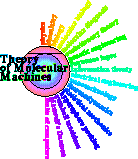
@article{Schneider.edmm,
author = "T. D. Schneider",
title = "Theory of Molecular Machines.
{II. Energy} Dissipation from Molecular Machines",
journal = "J. Theor. Biol.",
volume = "148",
thenumber = "1",
pages = "125--137",
pmid = "2016881",
note = "\url{https://doi.org/10.1016/S0022-5193(05)80467-9},
\url{https://alum.mit.edu/www/toms/papers/edmm/}",
year = 1991}
PDF
version of the paper edmm.pdf.
Part one of this series: ccmm: Theory of Molecular Machines. I. Channel Capacity of Molecular Machines
| 1/Emin = 1/(kBT ln(2) |

2005 Jun 7: A review of Physical Approaches to Biological Evolution by M.V. Volkenstein was written by Glenn L. E. May at Amazon on February 8, 2005. The review is reasonable. My main quibble is that Glenn uses 'I' instead of 'R' for information, but he tells me he did this to be consistent with Volkenstein's book. R stands for the rate of information in bits per second. That's how it is always measured. For Shannon it was bits per second or bits per symbol. For molecular biology, it is bits per base or bits per binding site (etc). On January 31, 2005, Glenn May also wrote a review of Information Theory and Evolution by John Avery also citing this page. Again, he has a clear grasp of the basics.


Schneider Lab.
origin: 1999 February 10
updated: 2023 Sep 19
